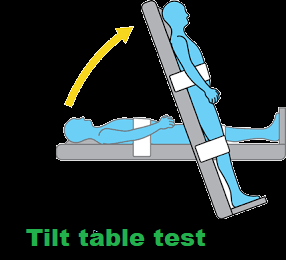A tilt table test is a diagnostic procedure used to evaluate the cause of unexplained fainting (syncope).
such as neurocardiogenic syncope (NCS), which is a form of reflex syncope that occurs when the body’s normal “fainting reflex” is triggered by certain triggers, such as a sudden change in position or emotional stress.
Other conditions that can be diagnosed with a tilt table test include vasovagal syncope, which is caused by a malfunction in the body’s blood pressure regulation system, and postural orthostatic tachycardia syndrome (POTS), which is a disorder that affects the body’s ability to adjust to changes in position.
The test involves placing the patient on a table that can be tilted to different angles while the patient’s vital signs are monitored.
The tilt test procedure is typically done in a hospital or clinic setting and typically takes about 30 minutes to complete.
During the test, the patient will be hooked up to monitors that measure heart rate, blood pressure, and electrocardiogram (ECG) readings. The patient will then be placed on a table that can be tilted to different angles table will be tilted to a 60-degree angle for a period of time, and the patient’s vital signs will be monitored throughout the test.
If the patient experiences symptoms of fainting, such as lightheadedness, dizziness, or a drop in blood pressure, the test will be stopped and the patient will be returned to a lying position.
There are a few things that patients should keep in mind before having a tilt table test. First, it is important to wear comfortable clothing and to avoid eating or drinking anything for several hours before the test.
Second, patients should inform their doctor of any medications they are currently taking, as certain medications can affect the results of the test. Finally, patients should be prepared for the possibility of experiencing symptoms of fainting during the test.
Overall, the tilt table test is a safe and effective diagnostic tool that can help doctors identify the cause of unexplained fainting. The procedure is relatively quick and painless, and it allows doctors to gather important information about a patient’s condition that can help guide treatment decisions.
If you or a loved one is experiencing symptoms of fainting, talk to your doctor about whether a tilt table test might be right for you.
